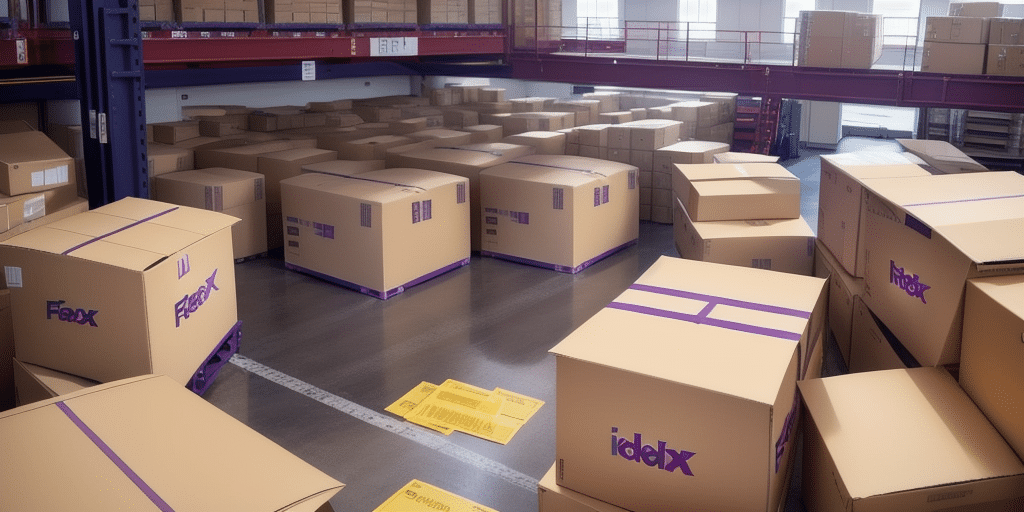Planning and Strategy for Your Delivery App
Understanding the Need for a Business Delivery App
In today's fast-paced world, a business delivery app is essential for staying competitive. According to a report by Statista, the online food delivery market is projected to reach over $200 billion by 2025. A delivery app enables businesses to provide expedited services, enhancing customer satisfaction and loyalty. Additionally, it streamlines internal processes, leading to increased efficiency and reduced operational costs.
Furthermore, a delivery app allows businesses to expand their reach beyond their physical locations, tapping into a broader customer base. This is crucial as more consumers prefer online shopping and home delivery services. Moreover, the app provides valuable data and insights, such as customer preferences and order volumes, which can be leveraged to optimize operations and make informed business decisions.
Identifying Target Audience and Marketplace
Before developing a delivery app, it's vital to identify the target audience and understand the marketplace. Researching current market trends and analyzing competitors provides valuable insights into building a competitive app. Consider the geographical location of your audience to determine language, currency, and cultural factors that should be incorporated into the app's design and functionality.
For example, if your target audience is in a non-English-speaking region, integrating multiple language options or translation services is essential. Similarly, if operating in an area with a different currency, ensure the app can convert prices and display them accordingly.
Design and User Experience
Developing an Intuitive User Interface
The success of a delivery app significantly depends on its user interface (UI). An intuitive UI that is easy to navigate, features clear call-to-action buttons, and employs a pleasing color scheme enhances the overall user experience. Users should be able to effortlessly navigate the app without confusion or frustration.
Ensuring that the app is responsive and compatible with various devices is also crucial. With the increasing use of smartphones and tablets, the app should adapt to different screen sizes and resolutions to provide a seamless experience across all devices.
Creating Efficient Navigation and Search Features
Efficient navigation and robust search features are vital for user satisfaction. Customers should be able to easily search for products, place orders, and complete transactions without unnecessary steps. Implementing clear and concise labeling, intuitive design elements, and a streamlined checkout process can significantly reduce user drop-off rates.
According to a study by Nielsen Norman Group, efficient navigation and search capabilities can enhance user engagement and increase conversion rates.
Technical Implementation
Choosing the Right Platform
Selecting the appropriate platform (iOS or Android) is a critical decision that impacts the app's reach and performance. Each platform has distinct design philosophies and user interfaces, which affect how the app is perceived by users. It's essential to align the platform choice with the preferences and usage habits of your target audience.
For instance, if the majority of your audience uses Android devices, prioritizing Android development might yield better results. Alternatively, a dual-platform approach ensures broader reach but may require more resources.
Designing a Responsive and Scalable Backend Infrastructure
A scalable and responsive backend infrastructure is fundamental to handling varying traffic loads. Utilizing cloud-based solutions allows for easy scaling based on demand, ensuring that the app remains performant even during peak usage periods.
Implementing redundant servers, load balancers, and backup systems enhances fault tolerance, preventing downtime and data loss. According to IBM, a robust backend infrastructure ensures reliability and a smooth user experience.
Integrating Payment Gateway and Secure Transaction Features
Secure payment gateways are essential for building customer trust and facilitating smooth transactions. Integrating multi-factor authentication and adhering to the Payment Card Industry Data Security Standard (PCI DSS) ensures that sensitive customer data is protected.
Offering multiple payment options, such as credit cards, debit cards, and mobile wallets, enhances convenience and reduces the likelihood of abandoned transactions. Optimizing the checkout process to minimize friction is crucial for maintaining high conversion rates.
Features and Functionality
Incorporating Real-time Tracking and Order Management
Real-time order tracking and an efficient order management system (OMS) are pivotal features of a delivery app. They provide customers with up-to-date information on their order status, fostering trust and transparency.
An effective OMS allows businesses to manage orders in real-time, optimizing delivery routes and reducing wait times. According to Forbes, real-time tracking enhances customer satisfaction and operational efficiency.
Engaging with Customers through Push Notifications and In-app Messaging
Utilizing push notifications and in-app messaging keeps customers informed about their orders and engaged with the app. These features can be used to send personalized offers, special discounts, and real-time updates, thereby increasing customer retention.
Moreover, providing real-time customer support through these channels can significantly improve user satisfaction and address any issues promptly.
Providing Personalized Offers and Loyalty Programs
Personalization is a powerful tool for driving sales and enhancing user engagement. Offering personalized offers and implementing loyalty programs incentivize customers to continue using the app, leading to repeat purchases and increased customer lifetime value.
Analyzing user behavior and preferences allows businesses to tailor promotions and rewards that resonate with individual customers, fostering loyalty and long-term relationships.
Security and Data Management
Ensuring App Security with Robust Authentication
Implementing robust authentication and authorization mechanisms is crucial for protecting user data and preventing unauthorized access. Techniques such as biometric authentication, token-based systems, and encryption safeguard sensitive information and build user trust.
According to CSO Online, strong security measures are essential for maintaining the integrity and reputation of a delivery app.
Analyzing User Data to Improve App Performance
Utilizing user data effectively can drive continuous improvement in app performance and user engagement. By analyzing patterns in user behavior, businesses can identify areas for enhancement, optimize features, and tailor the user experience to better meet customer needs.
Data-driven decision-making enables businesses to stay agile and responsive to changing market demands, ensuring sustained growth and success.
Marketing and Promotion
Optimizing App Store Listing with ASO Strategies
App Store Optimization (ASO) is essential for increasing the visibility and discoverability of your delivery app. Effective keyword research, compelling app descriptions, and high-quality visuals contribute to higher rankings in app store search results.
According to Apple's ASO Guide, optimizing app metadata and leveraging positive reviews can significantly impact download rates and user acquisition.
Promoting Your Business Delivery App
Effective promotion strategies are necessary to drive app downloads and user engagement. Building a dedicated landing page, leveraging social media platforms, utilizing email marketing, partnering with influencers, and running targeted ad campaigns can enhance visibility and attract potential users.
Implementing a multi-channel marketing approach ensures that your app reaches a broader audience, increasing the likelihood of widespread adoption and success.
Challenges and Solutions
Overcoming Common Development Challenges
Developing a business delivery app comes with its set of challenges, including balancing business needs with customer expectations, developing for multiple platforms, and maintaining app quality when outsourcing development. Addressing these challenges requires clear communication, agile development practices, and effective project management.
Implementing iterative development cycles, soliciting regular feedback, and ensuring rigorous testing can help overcome these obstacles and result in a high-quality, user-friendly app.
Conclusion
A successful business delivery app requires meticulous planning, user-centric design, robust technical implementation, and effective marketing strategies. By understanding your target audience, ensuring app scalability and security, and continuously improving based on user data, you can create an app that not only meets customer needs but also drives business growth. Staying ahead of market trends and overcoming development challenges through agile methodologies will further ensure the long-term success of your delivery app.




















